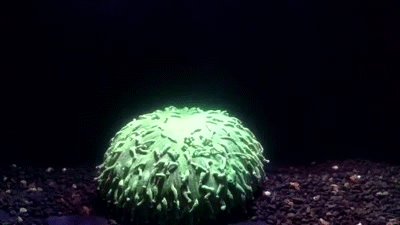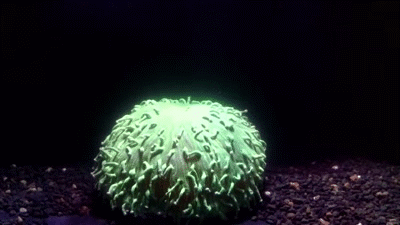todropscience:THIS IS HOW CORAL BLEACH AS SEA TEMPERATURE RISECoral bleaching, and coral reef die of
todropscience:THIS IS HOW CORAL BLEACH AS SEA TEMPERATURE RISECoral bleaching, and coral reef die off is a global concern for scientists, and a key symptom of climate change and the rising ocean surface temperatures. In order to understand how the process happens, in 2016 Australian scientists recorded a coral’s bleaching on camera for the first time.Using microscopes, digital camera and smart tablets, scientists created detailed time-lapse videos of the coral’s reaction to the heat-stress. Within the first two hours of raising the water temperature, the mushroom coral (Heliofungia actiniformi) began expelling inflating and releasing a green plume of a tiny algae Symbiodinium, that lives inside its tissues, in a process called pulsed inflation (in the second GIF). Some corals survived between 2 and 8 days under elevated temperature conditions. There was some degradation of the epidermal tissue during the later stages of the experiments.Coral bleaching occurs when coral expel microalgae that lives inside their tissues. Normally, coral live in an endosymbiotic relationship with the algae, which is crucial for the coral, and hence for the health of the whole reef. Bleached corals continue to live. But as the algae provide the coral with 90% of its energy, after expelling the algae the coral begins to starve.According to researchers, pulsed inflation appears to be a physiologicalresponse to thermal stress which facilitates the rapid expulsion of Symbiodinium,increasing the chance of non-lethal bleaching. The way coral naturally adapt and resist this changing climate is critical to understanding how we can protect our coral reefs and oceans long term. video by Brett Lewis/ Queensland University of TechnologyReference: Lewis et al., 2016. Expulsion of Symbiodinium by pulsed inflation under hyperthermal stress in Heliofungia actiniformis. Coral Reefs -- source link
Tumblr Blog : todropscience.tumblr.com


